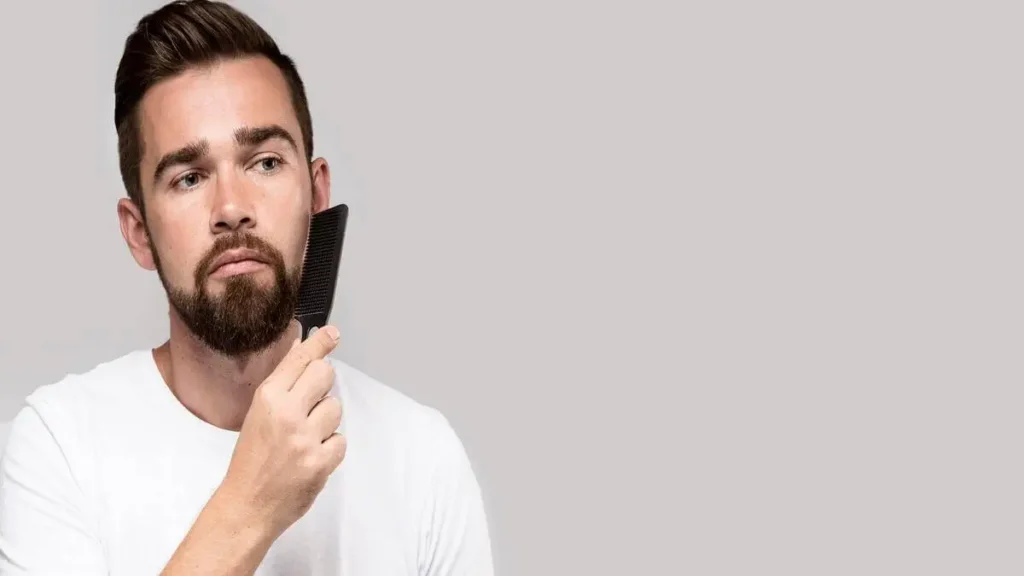In the modern grooming world, self-care has evolved past the routine of shaving and styling. Today’s men use their appearance and maintenance as a way to define confidence while enhancing their personal style. Hair coloring and beard dyeing, services that were previously excluded from home grooming, can now be done at home in minutes. The ability to bring the characteristics of professional salon services to home grooming is exciting, thanks to developments in the formulation of the products and the ease of kits. Whether you want to patch some grays or add color to your look, the right process can go a long way. For those using a man’s beard dye, understanding the process is important to ensure the finished product looks natural and is a culmination of the grooming experience.
Steps to Perfect Hair and Beard Dye Application at Home

1. Choosing the Right Product: The Foundation of Success
A great grooming routine starts with product selection. Choosing a dye that matches tone and texture is important for both hair and beard coloring. A natural-looking hair dye for men provides subtle, blended color when added to existing colors; the goal is to enhance the look, not overkill it.
While permanent dyes can be long-lasting, it is important to allow time for accurate application. Semi-permanent dyes provide an opportunity to test color. Look for ammonia-free or conditioning product choices on the label for minimized signaling for dryness and irritation. Be sure to quickly access a formula that delivers for men. This will ensure effective mixing with coarse beard hair and sensitive scalp conditions, setting the table for smooth application and even color.
2. Preparing the Canvas: Cleansing and Conditioning
The hair and beard should be appropriately prepared before application to help obtain even dye absorption. Thoroughly wash both areas using a non-residue shampoo to remove oil, dirt, and product build-up. It is best not to use any heavy conditioners just before dyeing, as they can create a barrier to full pigment absorption.
Since both areas are now clean, dry them with a towel until they are just slightly damp. This is important to ensure that the moisture can help in the even distribution and saturation of color. Now, take a comb and run it through the hair and beard to detangle any knots. It can help the dye to evenly coat each strand. It may seem like a minor detail; however, adequate preparation of the hair and beard can greatly influence their longevity and color payoff.
3. Applying with Precision: Even Coverage Matters
It is during the application that attention to detail truly pays off. Start the application process by sectioning the hair or dividing the beard into manageable sections. Always be sure to follow the product’s specifications for mixing ratios and timing. You should wear gloves to prevent your hands from staining in the application process and apply the dye evenly with the applicator provided or with a small brush if you need more detail. Begin the application at the roots or densest part, where gray coverage is needed the most. For the beard, apply with upward strokes so the color can work into coarse beard strands from multiple angles. Apply the dye methodically; it can take time, but an uneven application can lead to a patchy or unnatural result. Once all areas are fully covered, wait for the recommended development time.
4. Rinsing and Aftercare: Locking in the Color
Once the color has been processed, rinse the hair with warm water until the water runs clear. Avoid hot water, as it may open the hair cuticle and release some of the pigment. Then use a color-safe shiny conditioner to condition and retain moisture inside the hair without altering the color.
For beards, lightweight conditioning oils or beard balms can provide nourishment for the skin underneath and shine to the beard hair. Aftercare is essential for the maintenance of color over time; wash hair and beards with sulfate-free shampoos to ensure vibrancy for weeks on end.
5. Maintaining a Consistent Routine: Subtle Upkeep for Long-Term Results
Dyeing is not a once-and-done thing; it’s the consistency that keeps the look polished. A schedule for regular dyeing—usually every 4 to 6 weeks for hair—can be helpful (and somewhat more often with the beard). Small dye jobs help mitigate sharp contrasts between dyed hair and new growth, making the entire color look more consistent.
Sun, chlorine, or harsh cleansers in grooming or cleaning activities can cause premature fading of color. Using products that offer UV protection or some kind of gentle cleansing will help. Hydrating strands through conditioners or beard oils can also contribute to healthier hair, and healthy strands retain color better.
End Point
You can get perfect results with hair or beard color at home—without professional expertise—just with the right supplies, preparation, and experience. The formula you’ll choose should be something that works well with your natural color. Furthermore, proper aftercare methods can help turn a small grooming activity into an invigorating experience. Any man can learn how to color at home with confidence and a look that’s polished and true to himself with time and attention to detail.

